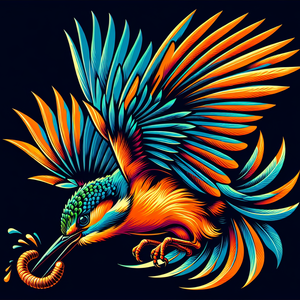Canvas as a Storytelling Medium

Imagery plays a pivotal role in storytelling through canvas art. Artists often choose visual elements that resonate with their own experiences or societal issues, crafting narratives that evoke emotional responses from the audience. Take, for instance, the works of contemporary artist Kehinde Wiley. His vibrant portraits challenge conventional representations of African American identity by juxtaposing classical European portraiture with modern urban contexts. Wiley’s paintings narrate stories of empowerment and cultural heritage, prompting viewers to reflect on themes of identity and representation within society. Similarly, Frida Kahlo’s self-portraits delve deep into her personal struggles, employing symbolic imagery to express themes of pain, identity, and resilience. Each brushstroke in her works reveals layers of her emotional landscape, allowing viewers to connect with her story on a deeply personal level. Kahlo’s expert use of color and symbolism transforms her canvas into a narrative space, where her experiences resonate with universal themes of suffering and healing. Through her art, she invites viewers to explore the intricate narrative of her life and the broader human experience.
Symbolism: Layers of Meaning
In addition to imagery, symbolism is fundamental to the storytelling capacity of canvas art. Artists often incorporate symbols that carry deep cultural or personal significance, enriching the narrative and offering multiple layers of interpretation. For example, the surreal works of Salvador Dalí are rich with symbols that prompt viewers to delve into the subconscious mind. His iconic painting "The Persistence of Memory," with its melting clocks, symbolizes the fluidity of time and invites a narrative exploration of perception and reality. Moreover, symbolism can serve to challenge societal norms and provoke critical thought. In her groundbreaking series "The Dinner Party," artist Judy Chicago employs intricately designed table settings for historical and mythical women, each symbolizing their contributions to history. This narrative approach not only celebrates women's achievements but also critiques the historical marginalization of female voices, inviting viewers to engage in a broader conversation about gender and representation.
Layering Techniques: Building a Narrative
Layering techniques provide yet another avenue for artists to create complex narratives on canvas. The process of layering paint, textures, and materials can evoke a sense of depth and history within a piece. Mixed-media artist Robert Rauschenberg, for instance, famously combined paint with found objects, crafting works that narrate the relationship between art and everyday life. His artwork often reflects the chaos and vibrancy of contemporary culture, urging viewers to piece together their own narratives from the multitude of elements presented. Artists like Julie Mehretu take layering to new heights, using architectural drawings, maps, and gestural marks to construct dynamic compositions that reflect the complexities of urban life. Her canvases become visual narratives of migration, globalization, and the interconnectedness of human experiences, encouraging viewers to engage with the stories that unfold within the layers. Through these techniques, artists create a rich tapestry that invites deeper exploration and interpretation.
Viewer Interpretation: Engaging with the Narrative
A particularly compelling aspect of canvas art as a storytelling medium is the role of the viewer in interpreting the narrative. Each observer brings their unique experiences and perspectives to the artwork, creating a dialogue that enriches the storytelling process. For instance, the abstract works of Mark Rothko invite viewers to immerse themselves in color and form, eliciting emotional responses that can vary widely from person to person. The simplicity of his canvases belies the complexity of the narratives they can evoke, demonstrating how art can serve as a mirror reflecting individual experiences. This dynamic engagement transforms canvas art from a mere aesthetic experience into a participatory encounter, where viewers become co-creators of the narrative. Such interaction fosters a deeper connection between the artwork and the audience, inviting them to explore their interpretations and emotions. This collaborative aspect of storytelling in canvas art underscores its power to communicate and inspire.
Canvas art transcends mere visual experience; it embodies a potent storytelling medium that encapsulates the complexities of human existence. Through imagery, symbolism, and layering techniques, artists create narratives that resonate deeply with viewers, inviting them to engage, interpret, and reflect. As we continue to explore the narratives embedded within canvas art, we uncover the profound ways in which art can communicate, challenge, and inspire. The stories told on canvas are as diverse as the artists themselves, reminding us of the rich tapestry of human experience and the transformative power of storytelling in art. Through this exploration, we come to appreciate not only the aesthetic beauty of canvas art but also its profound ability to connect us through shared narratives and experiences.
Art Curator
Art museums, galleries, cultural organizations such as the Museum of Modern Art (MoMA), Getty Center
Responsibilities
Develop and manage art exhibitions, focusing on thematic narratives that resonate with audiences.
Collaborate with artists to acquire and promote works that align with the gallery’s vision and mission.
Conduct research on artworks and artists to enhance public understanding and appreciation of art.
Skills Required
Strong knowledge of art history and contemporary art practices.
Excellent communication and organizational skills for coordinating exhibitions and outreach programs.
Experience in grant writing and fundraising to support exhibitions.
Art Educator
Schools, community art centers, educational organizations like Young Audiences
Responsibilities
Design and implement art curriculum that integrates storytelling techniques through various mediums, including canvas.
Facilitate workshops and classes that encourage students to express personal narratives through their art.
Assess student progress and provide constructive feedback to enhance their artistic development.
Skills Required
Strong background in art education and pedagogical methods.
Ability to inspire creativity and critical thinking in students of different ages.
Proficiency in various artistic techniques and mediums, particularly in painting and mixed media.
Art Therapist
Hospitals, rehabilitation centers, private practices
Responsibilities
Utilize art-making processes, including canvas painting, to help clients express emotions and work through personal challenges.
Conduct individual and group therapy sessions, focusing on the therapeutic benefits of art.
Develop treatment plans that incorporate artistic techniques tailored to each client’s needs.
Skills Required
Master’s degree in art therapy or a related field, along with relevant licensure.
Empathy and strong interpersonal skills to build rapport with clients.
Knowledge of psychological theories and practices related to art therapy.
Visual Artist Specializing in Mixed Media
Independent artist status, art collectives, community art initiatives
Responsibilities
Create original artwork that combines various materials and techniques, telling stories through layered visual narratives.
Exhibit works in galleries, participate in art fairs, and engage with collectors and the public.
Collaborate with other artists and organizations to promote mixed media as a viable storytelling medium.
Skills Required
Proficiency in various art forms, including painting, collage, and found object integration.
Strong conceptual skills to develop narratives through visual art.
Marketing and self-promotion skills to build a personal brand in the art community.
Art Critic/Writer
Art magazines, online platforms like Hyperallergic, cultural institutions
Responsibilities
Write reviews and articles analyzing art exhibitions, focusing on narrative techniques and thematic elements in canvas art.
Conduct interviews with artists to gain insights into their creative processes and storytelling approaches.
Engage with the art community through blogs, publications, and social media platforms.
Skills Required
Strong writing and analytical skills, with a deep understanding of visual art and narrative theory.
Ability to articulate complex ideas clearly and engagingly for diverse audiences.
Familiarity with digital publishing and social media trends in the art world.


